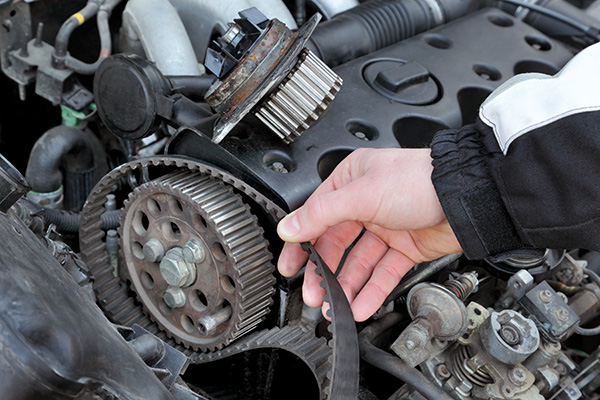
Ever wondered what keeps your car's engine running? The timing belt plays a crucial role in the myriad components under your car's hood. Understanding the timing belt, its importance, and how to maintain it can save you from unexpected breakdowns and costly repairs. So, let's look into everything you need to know about timing belts.
What Is a Timing Belt and What Does It Do?
The timing belt, often made of rubber with high-tensile fibers, is a vital part of your car's engine. Its main function is to synchronize the rotation of the crankshaft and the camshaft. This synchronization ensures that the engine's valves open and close correctly during each cylinder's intake and exhaust strokes. In simpler terms, it keeps your engine's internal parts working in perfect harmony.
Without a properly functioning timing belt, your engine's valves could collide with the pistons, leading to severe engine damage. This synchronization is crucial for maintaining the engine's efficiency, power, and overall performance. Essentially, the timing belt acts as the conductor of the engine's symphony, ensuring everything runs smoothly and on time.
Why Is the Timing Belt So Important?
Imagine a world where your car's engine operates without precise timing. It would be chaotic, inefficient, and prone to breakdowns. The timing belt prevents this chaos by maintaining precise timing between the engine's internal components. If the timing belt fails, the consequences can be catastrophic. Engine valves might strike the pistons, causing significant damage that could require extensive repairs or even a complete engine rebuild.
A worn or broken timing belt can leave you stranded without warning. Unlike other components that might give you signs before they fail, timing belts often break suddenly. This makes regular inspection and timely replacement essential to avoid unexpected breakdowns.
How Often Should You Replace Your Timing Belt?
Timing belt replacement intervals vary depending on the manufacturer and the specific engine. Generally, replacing the timing belt every 60,000 to 100,000 miles is recommended. However, always refer to your vehicle's owner's manual for the manufacturer's recommended replacement schedule. Ignoring this maintenance task can lead to severe engine damage and costly repairs.
It's also worth noting that timing belts can deteriorate over time, even if you don't drive your car frequently. Factors like extreme temperatures and oil contamination can weaken the belt, making it essential to replace it based on time as well as mileage. Many manufacturers suggest replacing the timing belt every 5 to 7 years, regardless of mileage.
Signs Your Timing Belt Needs Replacement
While the timing belt might not give obvious signs before failing, a few indicators suggest it's time for a replacement. One of the most common signs is a ticking noise coming from the engine. This noise often indicates that the timing belt is wearing out and may soon fail.
Another sign is engine misfires or difficulty starting the car. A worn timing belt can cause the engine's timing to be off, leading to misfires and starting issues. If you notice these symptoms, it's crucial to have your timing belt inspected by a professional.
Visible signs of wear, such as cracks, fraying, or glazing on the belt's surface, also indicate it's time for a replacement. If you notice any of these signs during a visual inspection, don't delay in getting your timing belt replaced.
The Cost of Ignoring Timing Belt Maintenance
Neglecting timing belt maintenance can lead to disastrous consequences. If the timing belt breaks while the engine is running, it can cause extensive damage to the engine's internal components. In interference engines, which are common in many modern cars, a broken timing belt can result in bent valves, damaged pistons, and potentially a complete engine failure.
The cost of repairing engine damage caused by a broken timing belt can be thousands of dollars. In contrast, replacing the timing belt at the recommended intervals is a relatively inexpensive maintenance task. Investing in timely maintenance can save you from the financial burden and inconvenience of major engine repairs.
Choosing the Right Replacement Timing Belt
When it comes to replacing your timing belt, quality matters. Using a high-quality replacement timing belt ensures longevity and reliability. Always choose a timing belt that meets or exceeds the manufacturer's specifications for your vehicle. While it might be tempting to opt for a cheaper alternative, investing in a quality timing belt can prevent future issues and ensure the smooth operation of your engine.
It's also a good idea to replace related components, such as the water pump, tensioners, and idler pulleys when replacing the timing belt. These components often wear out at the same rate as the timing belt, and replacing them together can save on labor costs and prevent future problems.
Don't wait for a breakdown! Visit Davenport Motor Company today for a comprehensive timing belt inspection and replacement. Keep your engine running and avoid costly repairs.